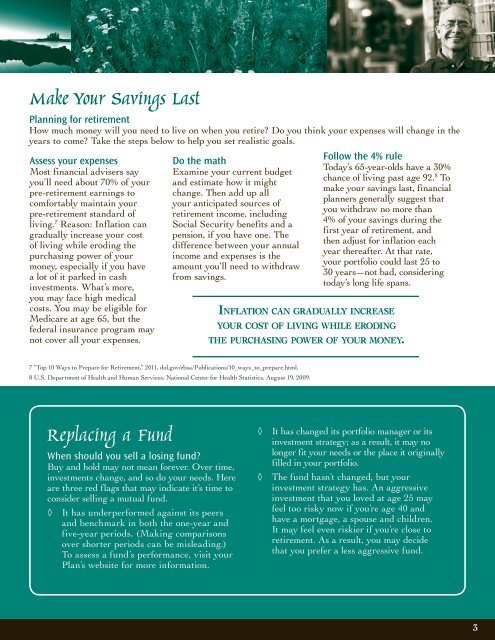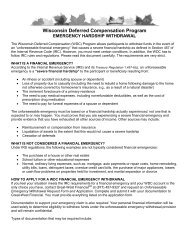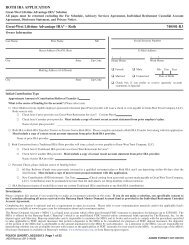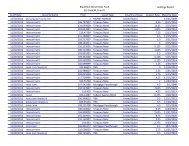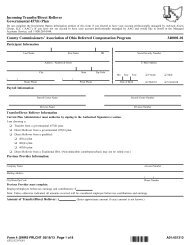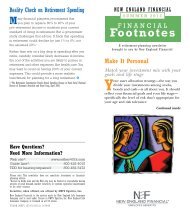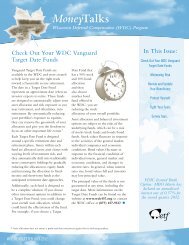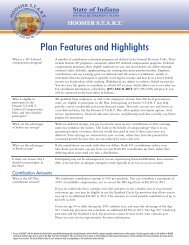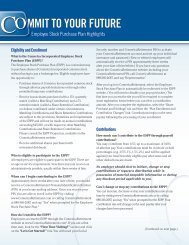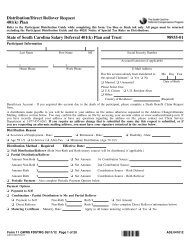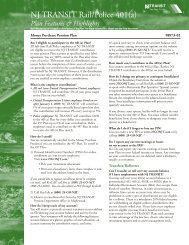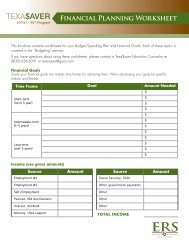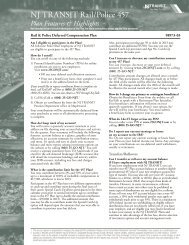Minimizing Risk - FASCore
Minimizing Risk - FASCore
Minimizing Risk - FASCore
You also want an ePaper? Increase the reach of your titles
YUMPU automatically turns print PDFs into web optimized ePapers that Google loves.
Make Your Savings last<br />
Planning for retirement<br />
How much money will you need to live on when you retire? Do you think your expenses will change in the<br />
years to come? Take the steps below to help you set realistic goals.<br />
Assess your expenses<br />
Most financial advisers say<br />
you’ll need about 70% of your<br />
pre-retirement earnings to<br />
comfortably maintain your<br />
pre-retirement standard of<br />
living. 7 Reason: Inflation can<br />
gradually increase your cost<br />
of living while eroding the<br />
purchasing power of your<br />
money, especially if you have<br />
a lot of it parked in cash<br />
investments. What’s more,<br />
you may face high medical<br />
costs. You may be eligible for<br />
Medicare at age 65, but the<br />
federal insurance program may<br />
not cover all your expenses.<br />
7 “Top 10 Ways to Prepare for Retirement,” 2011, dol.gov/ebsa/Publications/10_ways_to_prepare.html.<br />
8 U.S. Department of Health and Human Services, National Center for Health Statistics, August 19, 2009.<br />
Replacing a Fund<br />
Do the math<br />
Examine your current budget<br />
and estimate how it might<br />
change. Then add up all<br />
your anticipated sources of<br />
retirement income, including<br />
Social Security benefits and a<br />
pension, if you have one. The<br />
difference between your annual<br />
income and expenses is the<br />
amount you’ll need to withdraw<br />
from savings.<br />
When should you sell a losing fund?<br />
Buy and hold may not mean forever. Over time,<br />
investments change, and so do your needs. Here<br />
are three red flags that may indicate it’s time to<br />
consider selling a mutual fund.<br />
◊ It has underperformed against its peers<br />
and benchmark in both the one-year and<br />
five-year periods. (Making comparisons<br />
over shorter periods can be misleading.)<br />
To assess a fund’s performance, visit your<br />
Plan’s website for more information.<br />
Follow the 4% rule<br />
Today’s 65-year-olds have a 30%<br />
chance of living past age 92. 8 To<br />
make your savings last, financial<br />
planners generally suggest that<br />
you withdraw no more than<br />
4% of your savings during the<br />
first year of retirement, and<br />
then adjust for inflation each<br />
year thereafter. At that rate,<br />
your portfolio could last 25 to<br />
30 years—not bad, considering<br />
today’s long life spans.<br />
InflatIon can gradually Increase<br />
your cost of lIvIng whIle erodIng<br />
the purchasIng power of your money.<br />
◊ It has changed its portfolio manager or its<br />
investment strategy; as a result, it may no<br />
longer fit your needs or the place it originally<br />
filled in your portfolio.<br />
◊ The fund hasn’t changed, but your<br />
investment strategy has. An aggressive<br />
investment that you loved at age 25 may<br />
feel too risky now if you’re age 40 and<br />
have a mortgage, a spouse and children.<br />
It may feel even riskier if you’re close to<br />
retirement. As a result, you may decide<br />
that you prefer a less aggressive fund.<br />
3


